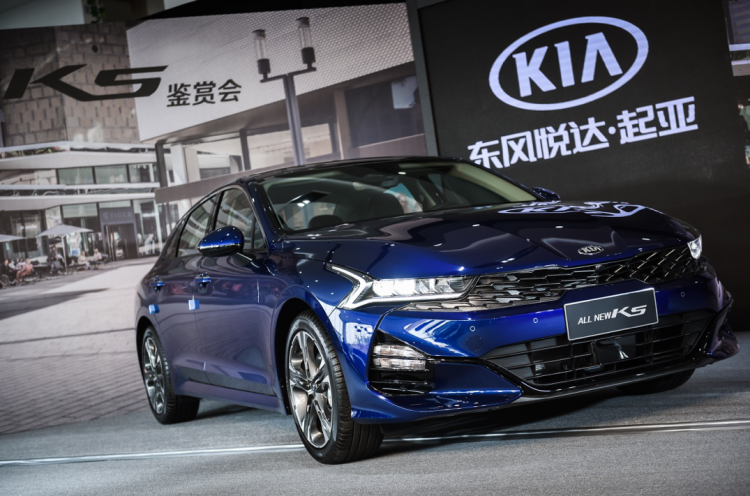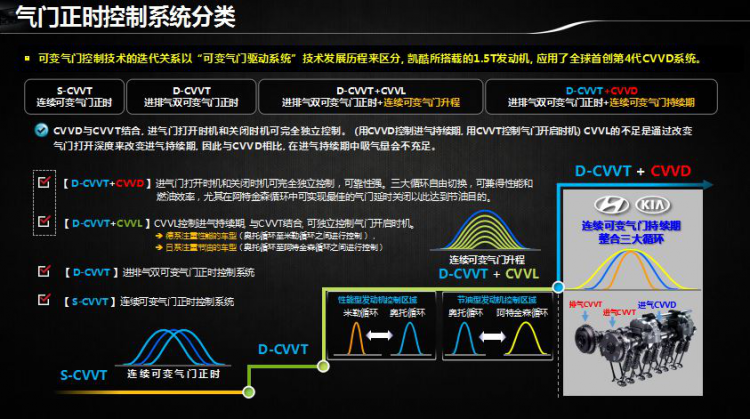On April 20, Dongfeng Yueda Kia officially announced that the Chinese name of the ALL NEW K5 domestic model is “Kaiku” and officially opened pre-sales. The power system is also announced at the same time. Kaiku will provide two power options of 1.5T and 2.0T. Compared with the 2.0L and 1.6T of the overseas version, the power performance has been significantly improved.

It is worth mentioning that Kaiku is equipped with the fourth-generation engine (fourth-generation engine) representing the highest level in the industry. It is the first to adopt CVVD technology, which further reduces fuel consumption and exhaust emissions while improving power performance. This technology is recognized as the most innovative technology in the field of variable valve technology, breaking through the bottleneck and limitation of engine variable valve control technology so far. Albert Biermann, R&D President of Hyundai Kia Motors, said: “Hyundai Kia Motors’ unique world-leading valve control technology – CVVD technology, has become an excellent opportunity for us to enhance our competitiveness in the engine field.”
From the perspective of the development of “variable valve drive system” technology, it has experienced “continuously variable valve timing” (S-CVVT), “dual variable valve timing for intake and exhaust” (D-CVVT) and “intake and exhaust valve timing”. Air dual variable valve timing + continuously variable valve lift” (D-CVVT+CVVL) three stages. The world’s first fourth-generation CVVD system applied by Kaiku combines D-CVVT and CVVD, so that the opening timing and closing timing of the intake valve can be completely independently controlled, and the reliability is stronger.

At present, there are three types of engine cycles, namely the Atkinson cycle, which prioritizes fuel consumption, the Miller cycle, which focuses on performance, and the Otto cycle, which balances fuel consumption and performance. The advantage of CVVD technology is that it can reasonably control the duration of valve opening according to driving conditions such as constant speed driving and acceleration driving, so as to simultaneously realize the high-quality effects of the three engine cycles of Atkinson, Otto and Miller. Not only that, CVVD technology can also flexibly adjust the effective compression ratio of the engine within the range of 4:1 to 10.5:1 to achieve a variable compression effect.
With the support of CVVD technology, the engine has better power and fuel economy, the performance can be increased by more than 4%, and the fuel efficiency can be increased by more than 5%. The reason is that in the case of constant speed driving with low output power, the engine can continue the opening time of the intake valve to the middle and late stages of the compression stroke, so as to reduce the resistance generated during compression and reduce fuel consumption; and when the vehicle accelerates , CVVD technology will close the intake valve at the beginning of the engine compression stroke to maximize the amount of air required for combustion, thereby increasing engine torque and effectively improving acceleration performance. On this basis, CVVD technology can also effectively reduce exhaust emissions by more than 12%.

It can be said that CVVD technology is not only one of the most noteworthy technologies in the field of variable valve control technology, but even a milestone progress in the century-old development history of gasoline engines.
It is reported that CVVD technology will first be applied to the 1.5T turbocharged engine to achieve a maximum power of 170Ps, a maximum torque of 253N m, and a fuel consumption as low as 5.7L under comprehensive operating conditions per 100 kilometers. Sufficient power can bring full driving pleasure. With excellent fuel economy.
Relying on the fashionable and dynamic coupe design and cutting-edge CVVD technology, while embracing the Z generation with its outstanding strength, Kaiku will also enhance the competitiveness of Dongfeng Yueda Kia in the mid-size car market and help the brand continue to improve.




